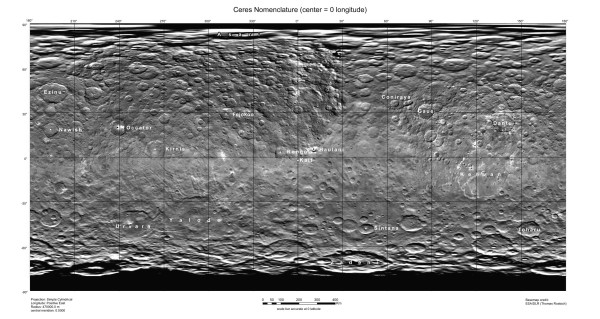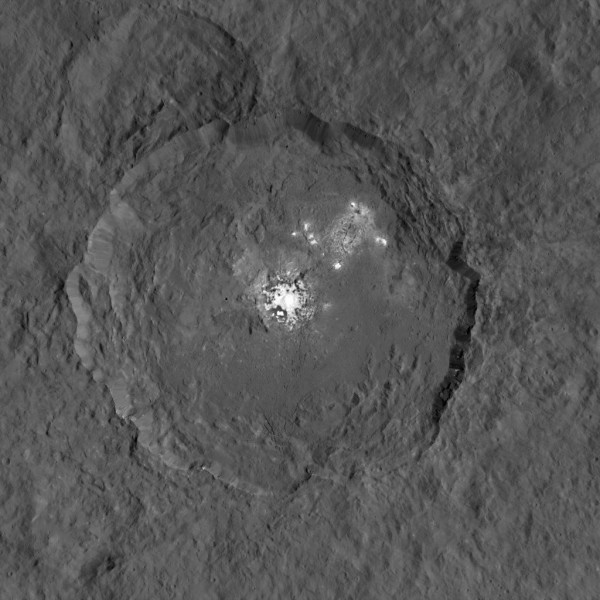“Bringing an asteroid back to Earth? What’s that have to do with space exploration? If we were moving outward from there, and an asteroid is a good stopping point, then fine. But now it’s turned into a whole planetary defense exercise at the cost of our outward exploration.” -Buzz Aldrin
What causes those mysterious bright spots on the Solar System's largest asteroid? Although those bright, highly-reflective features at the bottom of Occator crater on Ceres were what first jumped out at us, subsequent imaging has revealed that these features are present in many other (but not all!) locations where the surface has been eroded away by impacts.
Measurements of Ceres' density reveals that it's not only much lighter than Earth, but also lighter than other large asteroids like Vesta, hinting at the possibility of a subsurface ocean. Could these features be ice, rock, geysers or salt deposits?
Come find out what we're doing to find out -- and see all the latest from Dawn and Ceres -- on today's Mostly Mute Monday!



@Ethan
Secrets Revealed?
https://www.youtube.com/watch?v=G2y8Sx4B2Sk
Have been keeping an eye on Dawn/Ceres progress here:
http://dawn.jpl.nasa.gov/ I'll stick with the salts.
What an achievement so far !
Trouble at t'mill.
https://imgur.com/pKeCofL